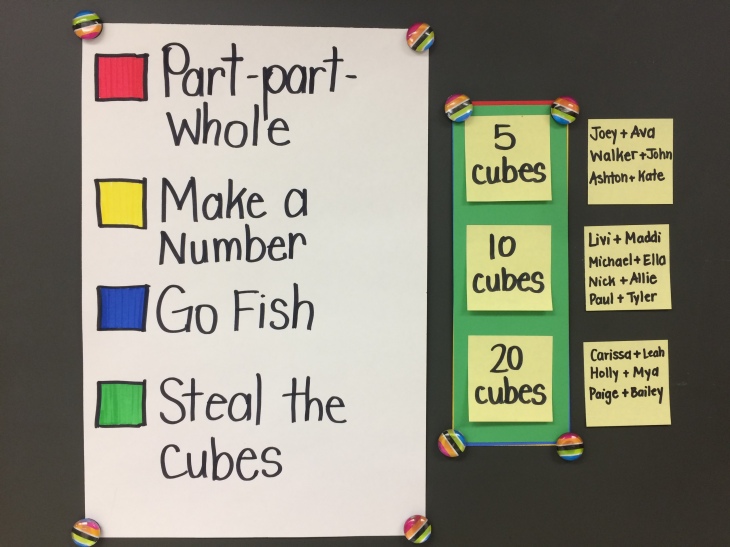Recently, I had two first grade teachers approach me about fact fluency. They were feeling both frustrated and scattered. They weren’t sure how to organize the time, how to organize the many games, or how to reach students at all the different skill levels they were at.
It is the same story we all have where every child that we teach is functioning at a different level. Some students didn’t even know their combinations to 5, many were learning combinations to 10, and even a few of the students could work within 20. The games that we were using were just not reaching every student with what they needed…they were flat and one dimensional. WAY too difficult for the students who weren’t on level, and WAY too easy for the students that had already reached mastery.
Enter the post-it note.

In “Steal the Cubes” each post it assigns each group to a level that is right for them.
Those sticky things are my savior when it comes to flexible grouping.
After talking it through, we thought that we would choose just FOUR fact fluency games that the students could rotate through daily. Once they get bored with the same four, we might introduce a new one. Time in the day is precious, so we knew that they had to be “go-to” games that could be setup, played and cleaned up quickly. We also knew that students grow fast as they learn, and that our groups had to be easy to change in and out.
So here is what we did:
- We taught ONE game to the students each week. They played them for a week until they understood the ins and outs of them. Then, once the routines of the games and the game playing behaviors/expectations were taught, we were ready to rotate through them.
- Each day the teacher chose the game by putting the color of the game out first, leveling the game like in the photo. Each game can be easily modified with different numbers, different cubes, etc. by just changing the post it note.
- We attached a third level of post it notes for the partners/groups that stayed in the same place for each of the games, the teacher can simply change up the post its when students move levels.
So once again, differentiation can truly be a little small step. While this one takes a little bit to set up, the students aren’t bored which makes that classroom game time so much more productive!
[…] at all the different skill levels they were at. It is the same story we all have where…Continue reading →from Beyond Traditional […]
LikeLike
I love you are keeping it simple both in content and setup. Especially the setup!
LikeLike